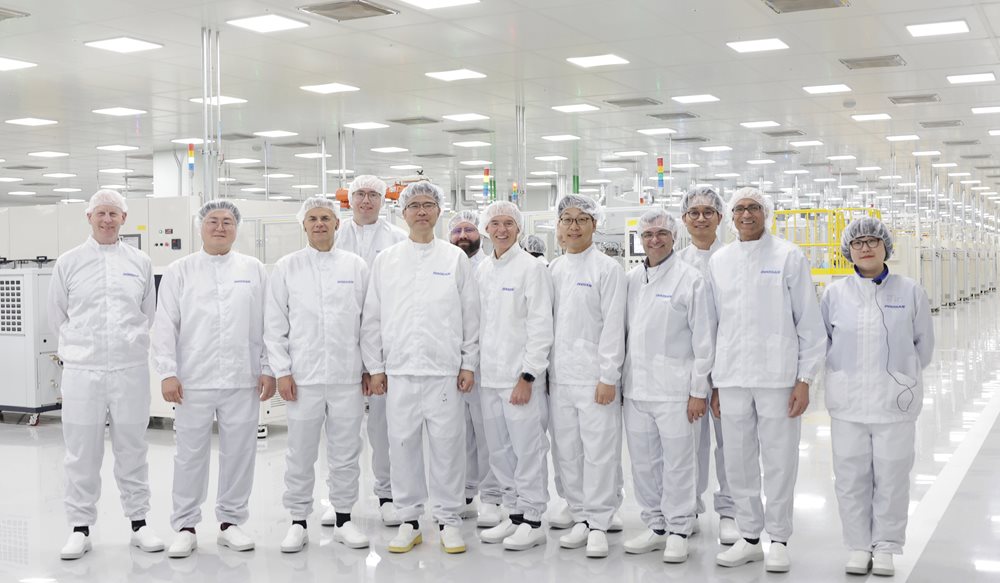Our CEO, Greg Sutch, examines the reasons UK tech firms are increasingly looking to Asia for their international growth. He pinpoints the demographic shifts and trends that are opening considerable opportunities, outlines examples of companies that are making headway in the region and gives five pieces of advice for success.
This article was first published here in 
Despite falling levels of venture capital investment, the UK’s vibrant startup sector remains the envy of many. But, for a country highly regarded for its innovation, the transition from admired startup to successful global business is often a challenge.
Until now, many startups – and indeed more established companies – have looked to the US for their international growth.
But times are changing. The current headwinds in global trade, including uncertainty and disruption in the US and stagnant economies in Europe, are causing some to think again. Increasingly, our most ambitious companies are instead looking east – to Asia. And I applaud them for this as it’s a region rich in opportunity for those prepared to navigate its complexities.
Opportunities on offer
Take our client Skylark Lasers, for instance – a Scottish company developing advanced lasers for high-precision industries. It’s set its sights on expanding in China, where demand for laser technologies is surging across the semiconductor, quantum and metrology sectors.
Or look at Forefront RF, a Cambridge fabless semiconductor scaleup whose wireless communications technology is likely to prove highly attractive to the booming smartwatch manufacturers of India, China and South Korea.
Both companies have recognised the opportunities on offer and are grasping them with both hands. And, as an international business development consultancy, we’re supporting them – and many others – with their expansion through our experienced teams on the ground in 12 major Asian markets including China, Japan, South Korea, Thailand, Vietnam and India.
So, beyond the troubles affecting other global markets, why else are UK startups turning eastwards for growth? After all, despite its enthusiasm for UK ideas and innovation, it’s not the easiest region to enter.
Demographic shifts
Demographic shifts across the region are part of the answer. Countries including Japan, South Korea and China have ageing, shrinking populations. This is creating huge challenges for their economies and, as a result, driving demand for productivity-enhancing technologies.
Advanced automation and robotics technologies, for instance, can create smart factories and speed up manufacturing and construction processes. AI-enabled diagnostic tools can reduce the pressure on stretched healthcare professionals, while robot carers can provide companionship and assistance to elderly patients. Smart public services can be delivered by AI-driven platforms, streamlining the many administrative functions they perform as the public sector workforce reduces.
In effect, these Asian countries are replacing their shrinking labour pools with automation, extending the working lives of older workers through technology and reducing dependency on human-intensive services by embedding AI and robotics into everyday life.
By contrast, many nations in Southeast Asia have huge, rapidly expanding populations.
Indonesia has around 280 million people, and this is forecast to hit 300 million by 2040, making it a massive, fast-growing economy. The Philippines and Vietnam each have more than 100 million people. And the wider Southeast Asian region has a population of almost 700 million – far larger than the EU’s 450 million – and it’s growing faster demographically and economically.
As a result, the region is grappling with challenges around housing, healthcare, employment, agricultural production and waste management as its population soars and urbanisation accelerates.
AI-driven technologies which support diagnostics or can predict housing or infrastructure needs are on their shopping list, together with innovations that enable modular construction and the manufacture of green building materials.
Enhancements to telecoms and broadband infrastructure in these markets are also critical to support the delivery of telehealth, remote working and online education and re-skilling across their countries. And innovation in agricultural technology – or ‘agtech’ – is crucial to feed their growing populations.

India represents another fantastic opportunity for UK tech firms, especially since the signing of the Free Trade Agreement earlier this year. The country’s aerospace and defence sectors are experiencing rapid growth, offering extensive potential for international collaboration – with its rapidly maturing spacetech industry just one example.
Intense pressure to decarbonise
Meanwhile, right across Asia, governments and industries are under intense pressure to decarbonise. This means they’re looking for clean energy technologies, such as those harnessing solar and offshore wind power.
Innovations to deliver carbon capture, usage and storage (CCUS) are in high demand from the petrochemical, steel and cement industries, which are struggling to make their processes eco-friendlier. Demand for technologies to enhance battery life and capacity is also increasing, as is interest in hydrogen-based technologies.
This is illustrated well by our former British cleantech client Ceres, which concluded a multi-million-pound deal with South Korean energy giant Doosan Fuel Cell. This contract has just reached a commercial milestone as Doosan has started mass production of clean power systems based on Ceres’ technology in its new, state-of-the-art factory as part of the nation’s drive to make its industrial economy more sustainable.

Careful planning
So, for companies with relevant technologies, there are clear opportunities in Asia. But entry into these complex markets requires careful planning.
Firstly, Asia is far from a monolith: each market has distinct cultural, linguistic and commercial dynamics.
For instance, in Japan, consensus-driven decision-making often takes place amongst middle managers whereas, in China, top-down leadership means access to senior executives is essential.
Across all Asian markets, building trust and long-term relationships is fundamental. And, in a business culture where meeting face-to-face is highly prized, it’s virtually impossible to achieve this remotely.
This is why it’s important to spend time familiarising yourself with the market you wish to enter and starting to develop the critical on-the-ground relationships on which success depends. It may be helpful to find an individual or company with the expertise, network and business and cultural knowledge to provide you with local support and intelligence in your chosen market.
The results of carefully planned approaches speak for themselves. Echion Technologies, our Cambridge-based client which develops advanced battery materials, knew it needed to establish a presence in Asia’s battery innovation hubs. We arranged more than 200 commercial meetings on its behalf across China, Japan and South Korea and the company is now running pilot projects with major industry players in these markets.
Similarly, we helped Accelerated Materials – which enables manufacturers to scale laboratory breakthroughs – to target Japan’s advanced industrial sector. Within a year, it has established a foothold in the semiconductor packaging sector and is rapidly building on this momentum.
Advice
For companies with the ambition to scale, Asia represents not just an alternative to mature western markets, but a growth engine with the potential to create the next generation of global technology leaders.
If you’re considering this move, I offer five pieces of advice:
- Prioritise – you can’t tackle the whole region at once, so identify the most attractive market or markets for your business and focus your energies
- Do your homework – Asia is a diverse region. You need fully to understand the trends, opportunities, challenges and culture of each market you’re addressing.
- Get to grips with regulations early on – each country has a complex regulatory framework for data privacy, foreign investment and licensing.
- Commit to a long-term presence – Asian markets value commitment and consistency. A short-term or opportunistic approach can easily flounder.
- Consider using a regional gateway – many startups, for example, use Singapore as a launchpad before going deeper into Asia. This is because it is a relatively easy market to navigate, offering simple business setup, a strong legal system and connectivity to larger markets.
To discuss your prospects in Asia, please get in contact with Greg at gregory.sutch@intralinkgroup.com.